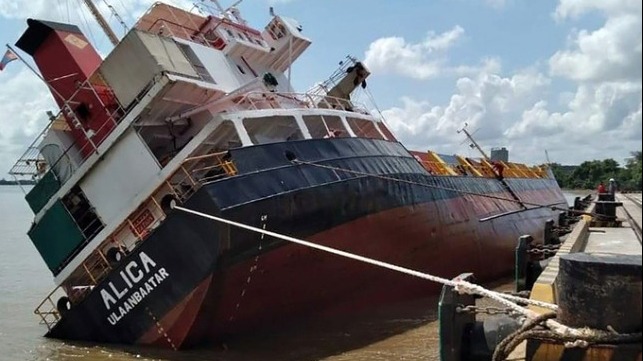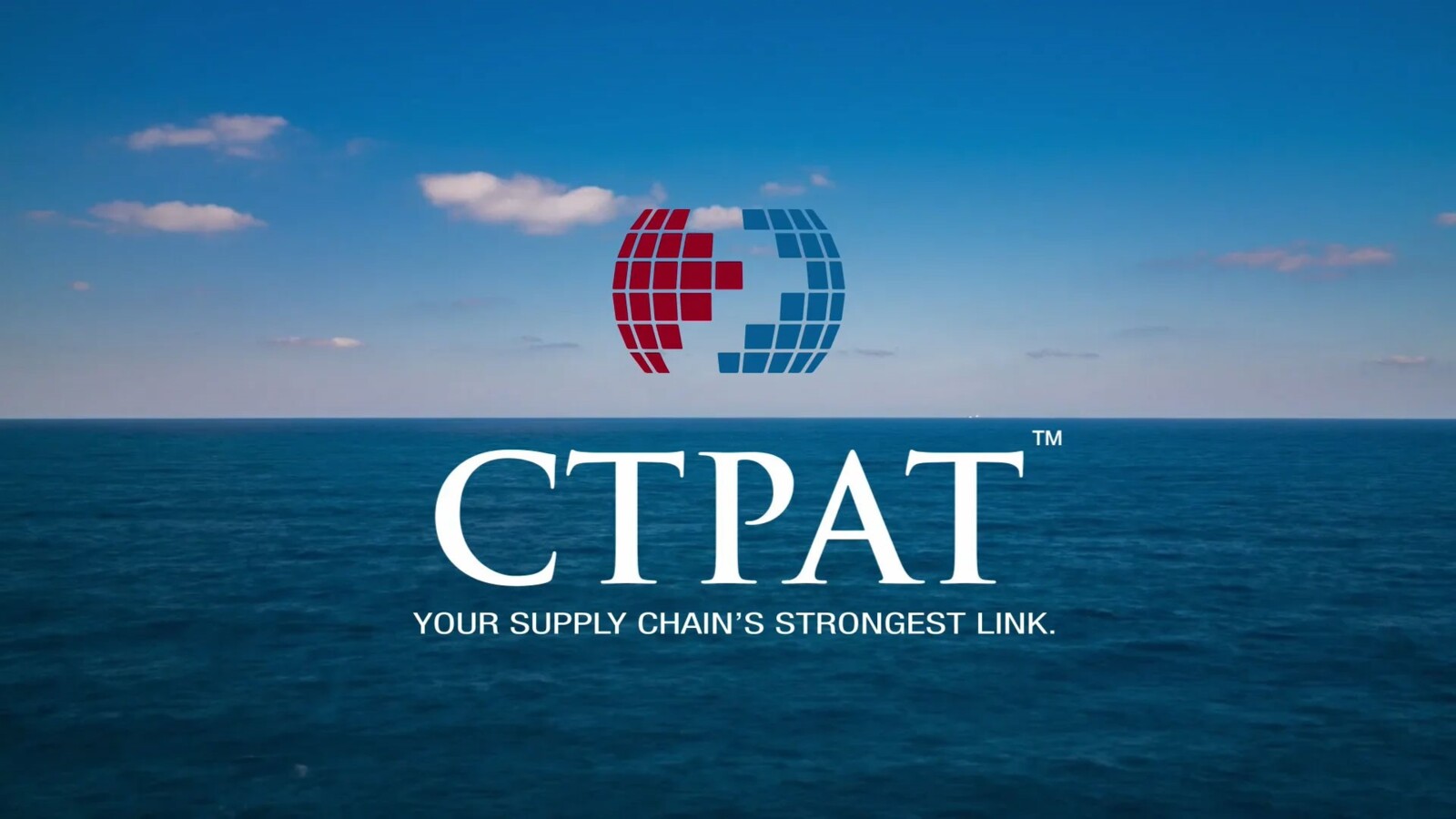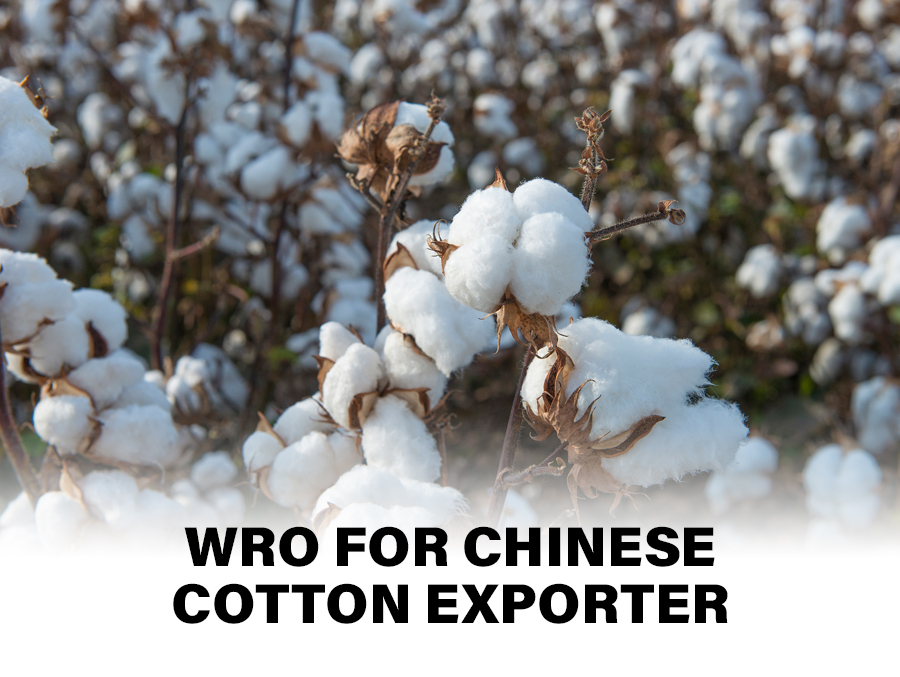Cargo Ship Loses Stability Dumping Containers Into Harbor
A small container ship loading containers in a Vietnamese port lost stability causing it to roll on its side and lose its deck loaded cargo. Vietnamese authorities are not reporting any injuries, but are warning of a navigation hazard. Ships are being advised to use alternate routes while a recovery operation is underway. Media reports say that a total of 18 containers fell into the Soai Rap River with some sinking alongside and others remaining afloat. Some containers were reportedly retrieved after having floated more than a half-mile away.
Click here to read the full article on maritime-executive.com
Empty-Container Rush Signals Worst Yet To Come For Shipping Community
For the first time in the rail container volume index history, nonholiday empty containers outnumber the loaded container volumes heading into Los Angeles. This occurred briefly at the beginning of 2019 around New Year’s when the trade war with China was escalating. Empty international containers are controlled mainly by the maritime operators and can signal growth in import volumes. This one, however, may just illustrate how dire the situation really is.
Click here to read the full article on hellenicshippingnews.com
West Coast Port Congestion Spreads North to Oakland
Key Takeaways:
“Los Angeles port officials see progress in reducing their bottleneck of cargo ships. Sail north to Oakland, though, and the line is even longer and there’s talk of the congestion lasting through the summer.”
“At the epicenter of global trade’s sharp recovery in the past year, California’s ports are hardly alone in dealing with unprecedented volume heading into the second year of the Covid-19 pandemic. In Singapore, a busy transit hub for containers, estimated throughput reached the highest level on record last month. On the U.S. East Coast, the Port of Savannah in Georgia said it’s on track to exceed a record 5 million 20-foot container units in its fiscal year ending in June.”
“According to Hong Kong-based Freightos, an online shipping marketplace, longer waits to offload in Southern California over the past six months forced the shippers of cargo to look for alternatives elsewhere on the West Coast and on the East Coast.”
“In Oakland, which handled a record number of inbound containers during the usually quiet month of March, they’re seeing sustained demand for imported consumer goods. That means little respite in ship delays between the two peak seasons for ocean freight – just before Chinese New Year, and the late-summer restocking of inventories before the holiday shopping season.”
Click here to read the full article on gcaptain.com
Weekly Supply Chain Congestion Update
Courtesy of the Pacific Merchant Shipping Association (PMSA)
Primarily due to the pandemic and the related consequences, the Ports of Los Angeles and Long Beach have been handling an unprecedented number of ships arriving at the same time, managing the flow of containers slowed by disruptions in transportation and warehouse availability, and adjusting for workers that contracted the COVID virus and are awaiting their vaccinations.
The purpose of this update is to provide interested parties with the status of the issues impacting the supply chain and to provide information about the steps being taken to address these serious challenges.
- Ships continue to arrive. As of April 21, San Pedro Bay ports had 33 total vessels at anchor, nine fewer than yesterday. Of those 33 vessels, 17 were container ships, a record low since December 11, 2020.
- Appointments at marine terminals. Scheduled appointments at marine terminals continue to be missed at a high rate. The missed appointments mean that containers are not removed from the terminal at the agreed upon date and that cargo owners trying to get appointments lose an opportunity to obtain their goods.
- Container dwell time showing signs of improvement. For the month of March, containers stayed at terminals for an average of 3.77 days in between the time they were unloaded from a vessel and picked up by a truck. While still high, this dwell time was down from 4.15 days in February and 5.1 days the month before. On dock rail dwell time, however, is not showing the same signs of improvement. For the month of March, on dock rail dwell time in San Pedro Bay was10.5 days, up from 8.6 days in February and 7.9 days the month before.
- Container imports are expected to continue to rise. “Anticipating record sales in 2021, retailers expect US containerized exports will increase 20 percent or more each month through June.”
- Advice from logistics experts to avoid delay in securing containers and incurring fees. Marine terminals desperately want to clear the backlog – detention and demurrage fees are designed to encourage the timely pick-up and return containers. Without detention and demurrage fees, the ports will become a primary warehouse for shippers. There are several actions that can be taken to secure containers from the ports:
- Place orders with suppliers as early as possible.
- Arrange early pick-up with a trucking company that avoids fees.
- Work with a freight forwarder that can set up the pick-up or return of containers in a timely manner
- Verify that the trucking company has made and kept their appointment
- Arrange for dual transactions to create greater efficiency
Reprinted by permission of LACBFFA





